How to choose the right orthopedic pillow?
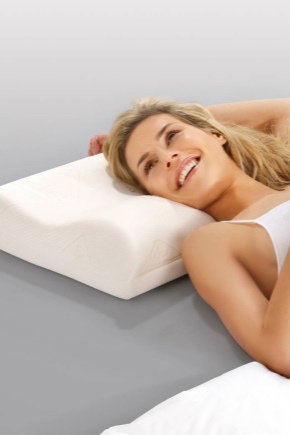
The performance of any person directly depends on rest. It is important that not only the mattress and the blanket are "correct": an orthopedic pillow is a mandatory attribute of good rest. In a huge selection of goods with tempting advertising, it is easy to get confused and take something completely wrong. You can rack your brains for a long time not knowing how to choose the right orthopedic pillow, however, in fact, everything is quite clear.
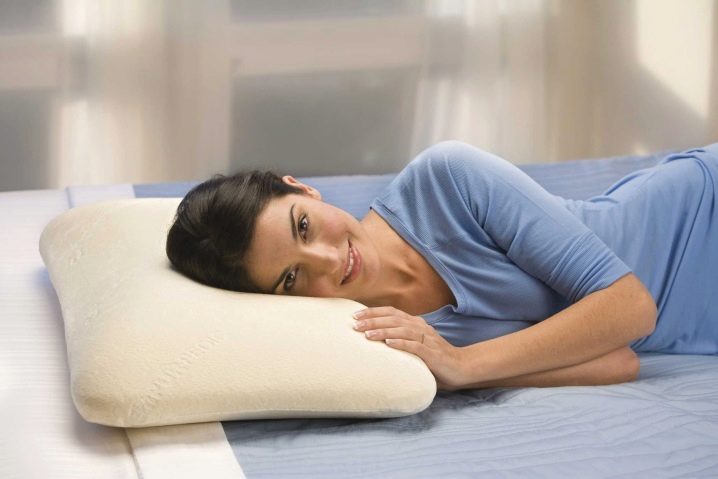
What is it for?
The human spine, supported by muscles, has curves. During sleep in a horizontal position, the muscular apparatus relaxes, which leads to the need for additional support of the narrow cervical spine, which does not have a powerful muscular membrane. Not every pillow can provide it, while orthopedic models are quite capable of relieving the neck and head from stress, excluding waking up in a state of weakness, fatigue, with headaches and stiffness in the shoulders.

Being anatomically shaped products, such pillows do not cure existing diseases, however, they can reduce pressure on the spine, reduce pain and relieve numbness associated with constant stress.
The purpose of such accessories is to ensure the comfort and proper rest of the user. Not having a cunning structure, they do an excellent job of supporting the musculoskeletal system with a guarantee of even distribution of the load.
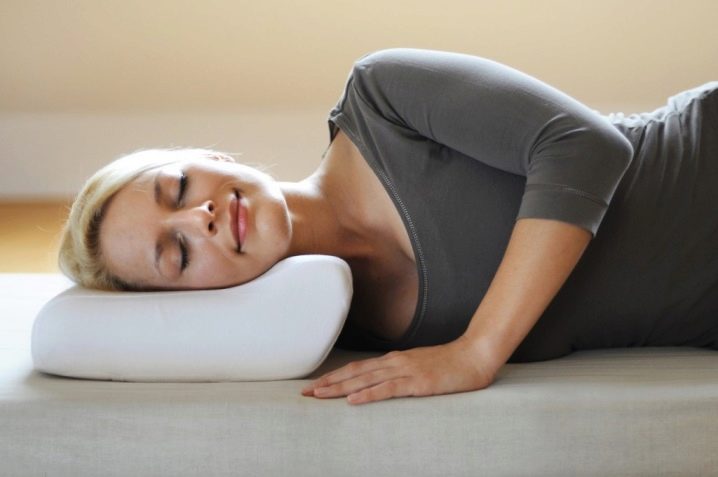
By appointment, such products are divided into daily preventive and travel counterparts:
- create healthy sleeping conditions;
- normalize blood flow to the brain;
- ensure the user's posture is correct.
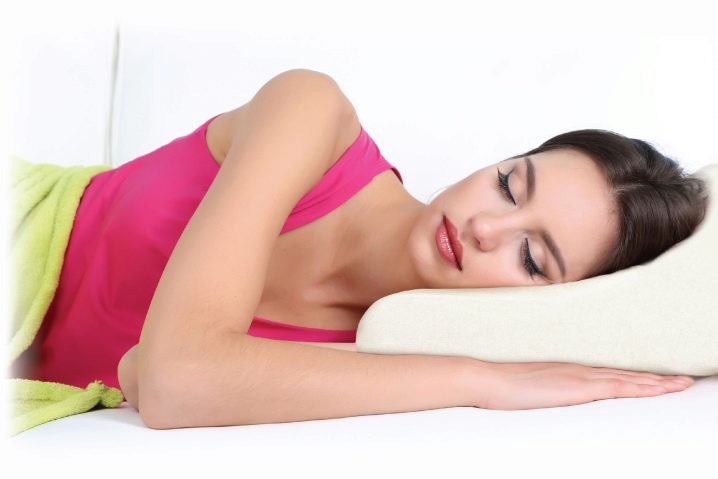
Orthopedic pillows meet all the requirements for "proper" rest, providing an even line of the spinal column.
They are characterized by:
- optimal height and width;
- hypoallergenic type of filler;
- elasticity of the product when changing position;
- comfortable support for the occipital or parietal part;
- natural textile of the cover;
- the presence of a refreshing effect.
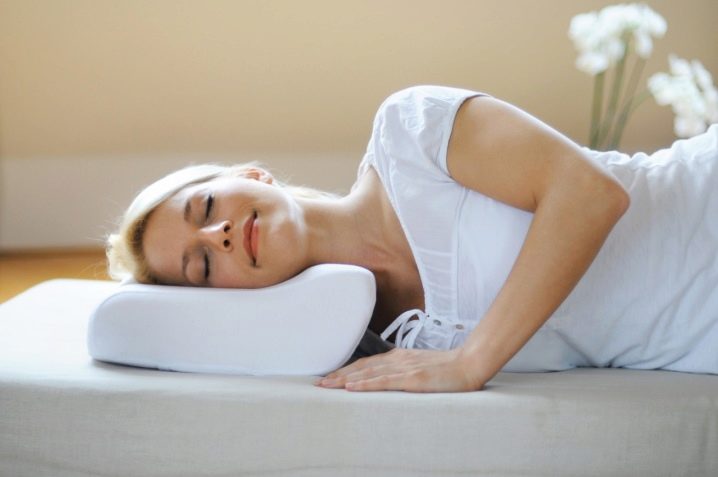
To whom is it recommended and to whom it is contraindicated
Orthopedic pillows are not bought just like that, without taking into account the opinion of the doctor. In this case, they can harm your health. Such a product is selected thoroughly, not so much to improve the quality of sleep, but to prevent existing diseases. The use of orthopedic pillows helps to prevent the development of degenerative changes in the vertebrae, the occurrence of attacks of bronchial asthma, together with traditional therapy to restore the correct functionality of the spine.
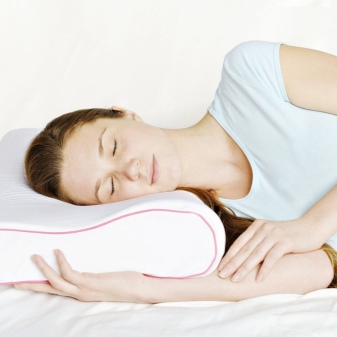

Such pillows are shown when:
- scoliosis, poor posture and spasmodic pain in the spine;
- respiratory failure;
- headaches, dizziness and migraines;
- increased fatigue;
- failures of blood circulation in the neck, head, legs;
- increased stress on the spinal column and especially in the cervical spine;
- insomnia, snoring.

The orthopedic pillows are suitable for all ages, including teens and babies. As a measure to prevent problems in children with a congenital predisposition to diseases of the musculoskeletal system, they are selected exclusively on the recommendation of an orthopedic surgeon. In no case should you rely on your own opinion or advice from the seller.It is the physician who will explain which form is capable of supporting the physiologically correct position of the neck, head, determining the correct position of the spine.

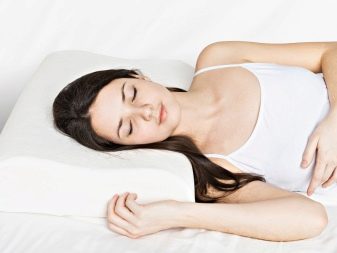
The list of users eligible for a pillow with an orthopedic effect includes patients with the following problems:
- cervical osteochondrosis;
- upper spine injuries and hernia;
- displacement of the vertebrae in the neck, chest;
- muscle hypertonia;
- neuralgia;
- torticollis (in infants).

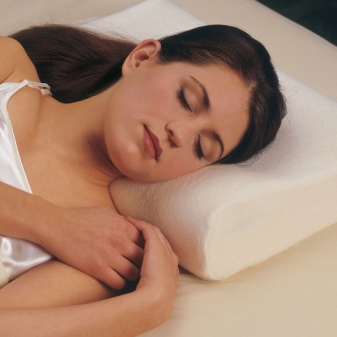
Contraindications for products are based on the intolerance of users of the filler material. These can be allergies and skin inflammations where the body and pillow touches. Despite the wide range of models for babies, such products can harm the formation of the cervical spine. This is due to the wrong shape, height, size.
Chair models
In addition to neck pillows, there are variations of the anatomical shape for sitting on a chair. They reduce the increased muscle tension associated with prolonged sitting of the body, which is not natural for the spine. These models relieve pressure on the spine by relieving pressure on the genitals.
They fit:
- students and schoolchildren;
- office workers, including secretaries and programmers;
- truck drivers, drivers of auto and air transport;
- users whose work involves carrying heavy loads.
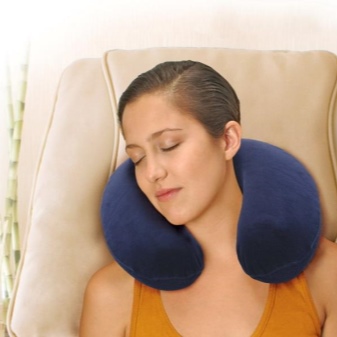
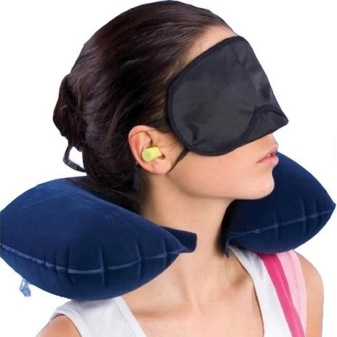
As recommended by doctors, these pillows are shown:
- pregnant women in the prenatal and postnatal period to recover, as well as reduce pain during labor;
- as rehabilitation for patients with pelvic injuries;
- with hemorrhoids, prostatitis, aching pain in the lower abdomen;
- those who have poor posture, have a curvature of the spine (scoliosis);
- disabled people forced to stay in a sitting position.
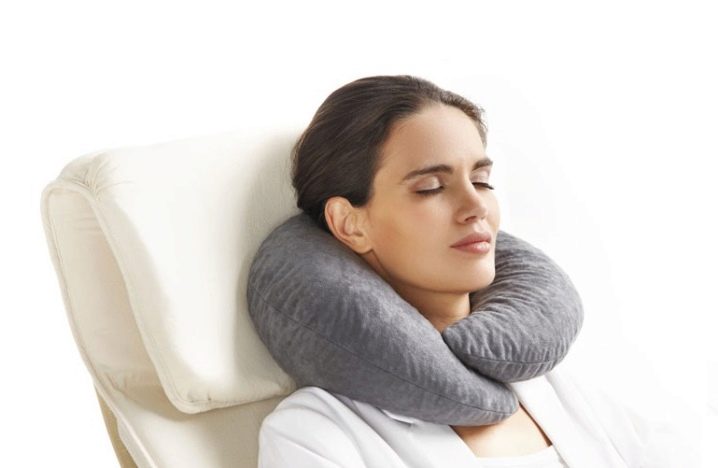
Selection criteria for adult sleep
Choosing a model is an activity that requires a particularly careful approach. Do not be shy, ignoring the "fitting" in the store: this will allow you to understand how the pillow suits a particular person. An important nuance of orthopedic pillows is the adaptation process, which is not the case with classical counterparts. It usually does not take more than one week.

To choose the right orthopedic pillow, you should pay attention to several factors:
- Brand reputation and filler composition (each material has its own properties of elasticity and resistance to deformation);
- The form - an orthopedic pillow should be anatomical (preferably with smooth curves for different body positions);
- The size (it should not be overweight or too childish, with insufficient head support);
- Cover textile (equipping the product with a dense material with a breathable structure that provides air exchange);
- Removable cover type for the possibility of washing or cleaning;
- Quality certificate and compliance with hygiene standards, as well as a seller's warranty.
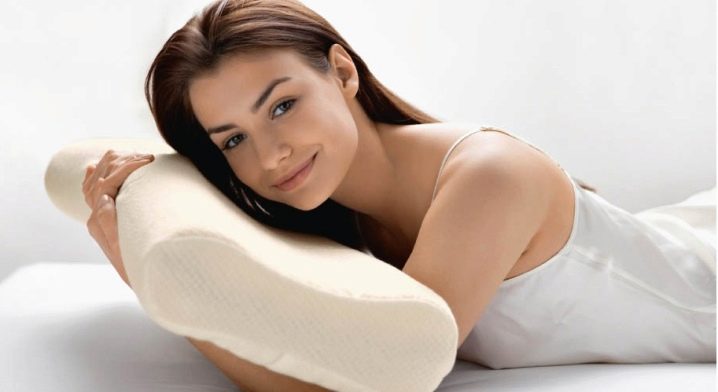
When trying on, which is mandatory, you should know: the head should be located in a recess specially designated for it. If a large size is chosen, it can provoke snoring or worsening of pain symptoms. The rigidity of the product should be medium, the springiness of the material is welcomed. You can buy a model with a double cover and filler treated with antibacterial impregnation in the form of silver ions. In the presence of serious spinal injuries, rigid models are unacceptable, as this can cause a hypoxic state.
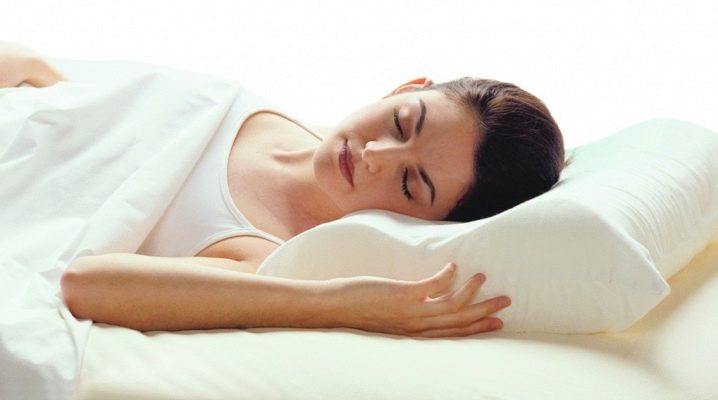
The form
The appearance of orthopedic pillows is varied. Trademarks offer different classic and ergonomic options, so orthopedic pillows are:
- rectangle (wave or with a depression in the center);
- square;
- oval;
- slide;
- roller;
- boomerang;
- horseshoe;
- bone;
- crescent;
- butterfly;
- ring (relevant for models on a chair).
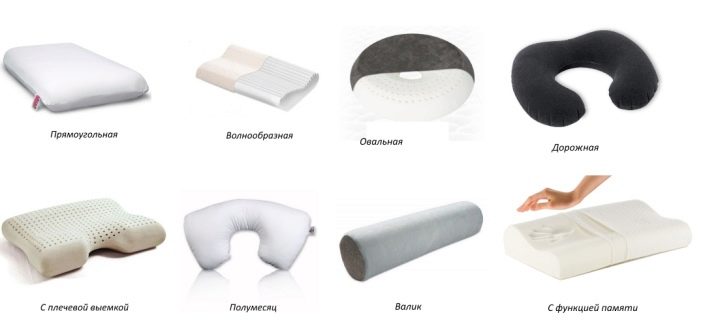
Of the assortment offered for sale, rectangular models of the "wave" type, having two rollers of different heights, as well as products with a recess for the shoulder, stand out. The variety of models is based on the different postures of the sleeping user. That is why pillows are different: they provide maximum comfort and benefit, but in specific head and neck positions. Moreover, this applies to both types of orthopedic pillows: both adapting to the user (made of memory foam), and forcing them to adapt to the product independently (latex and the like).
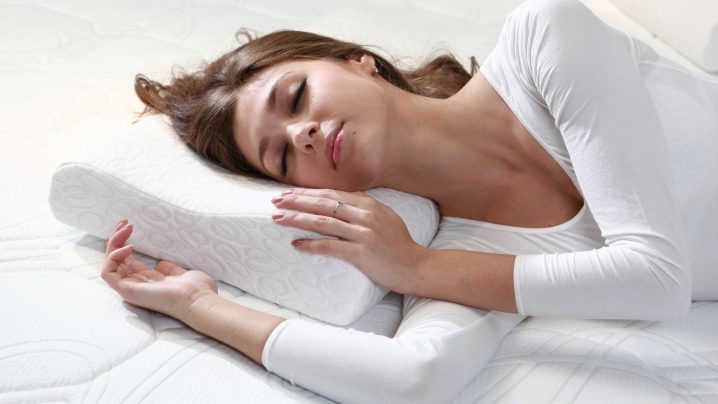
Dimensions (edit)
The size of the product is one of the main selection criteria: if it is not possible to find the correspondence of the pillow with the parameters of the body, resting on the pillow will turn into torture, the state in the morning will be depressed and broken, accompanied by heaviness throughout the body.
For the convenience of choosing, you can focus on the standard parameters:
- children's models in length and width are 20x30 - 35x50 cm;
- the average version for adults is close to 50x70 cm;
- the variation of rulers for men and women is from 40 to 80 cm in length and from 30 to 50 cm in width.

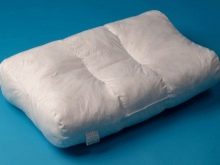
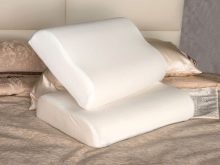
The dimensions of a good pillow are noticeably smaller than the classic counterpart. The orthopedic model should not overlap the mattress in its width. Products for women are more compact and do not exceed the standards of 40x50 cm.Variants for the stronger sex take into account the build: for an average weight, dimensions of 40x60 cm are sufficient, pillows of 50x70 cm are suitable for large men.
When choosing a size, do not rely on the principle out of habit: the more voluminous, the better. If the height is high, the position of the cervical spine will become unnatural.

The choice can be based on the height. It is important to find the correspondence of the distance from the surface of the sleeping place (mattress) to the neck, not forgetting about the posture of the sleeping user. It's simple: the height of the pillow is equal to the shoulder width, plus or minus 1-2 cm. The average figure for women is 8-10 cm, for men 14-16 cm. You can remember: the wider the shoulders, the higher the pillow.
For children, the rules are stricter:
- up to a year 1-4 cm;
- up to two years 3-4 cm;
- from three to seven 4-7 cm;
- after 9 years 8-9 cm.
It is worth taking into account: the opinions of doctors about the importance of orthopedic pillows for babies are controversial. Often they do not recommend such accessories until 7 years of age.

Excipients
Orthopedic pillows are unique and have many advantages. They are quite elastic, quickly restore their original shape when changing positions, therefore they are durable. The filler does not absorb extraneous odors, does not provoke allergies, is dust-resistant and has a "breathing" structure.
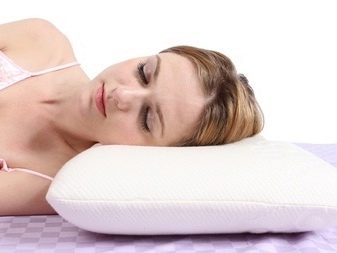
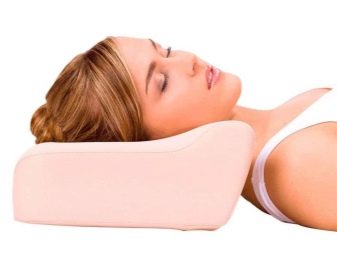
The main raw materials for orthopedic pillows are:
- orthopedic foam;
- natural latex;
- artificial latex;
- special cooling gel.
The main line of raw materials is environmentally friendly: microorganisms will never appear in such products, fungus will not start, moths and dust mites do not like them. Sometimes the buyer notes an unpleasant smell of a purchased pillow. As a rule, it wears out very quickly.
Orthopedic memory foam is convenient because you don't need to get used to it. It is able to take any position convenient for the user as soon as the material starts to heat up from contact with the body. It is a self-ventilated filler: its structure has many pores.

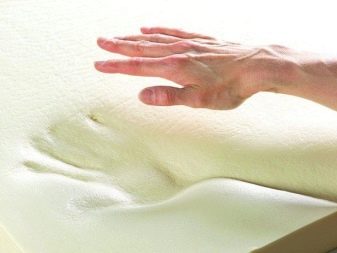
Latex versions are made from the product of processing the milky viscous sap of rubber trees, performed in two different ways, which determine the structure of the composition (microporous or with perforations in the form of holes of different lengths and diameters). Such a filler is considered one of the best, durable, resilient and resilient. Artificial latex is a latex-impregnated polyurethane foam, which is less elastic in properties than its natural counterpart, but rather elastic and tough, practically does not change color and does not form dents during long-term operation.
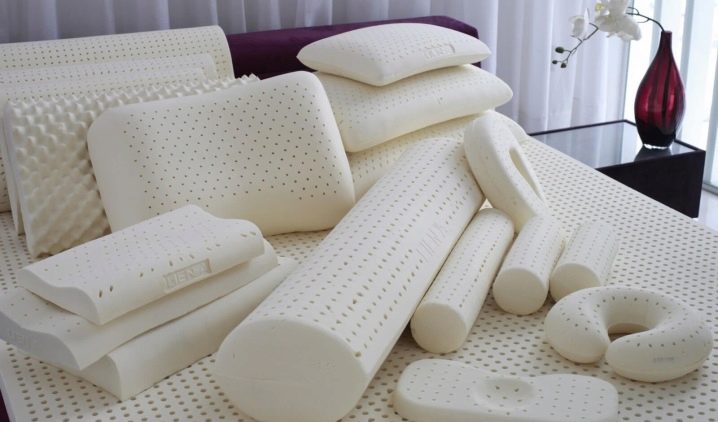
As for the polyester balls and their orthopedic properties, this is a moot point: when the head is lowered onto the pillow, they slip away to the sides without resistance, forming a hole.
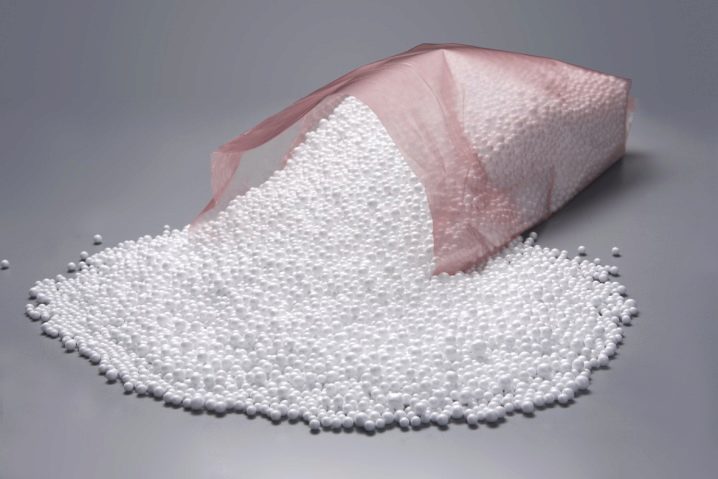
We take into account the pose
All people sleep in different ways, so the choice of posture matters.
There are a few tips to take note of:
- users who sleep mostly on their backs are better suited to low models of medium hardness;
- those who sleep on their side are shown pillows of medium height and moderate rigidity;
- for sleeping on your stomach, you should pay attention to optimally soft and even low-key models, given the rigidity of the mat (the softer the mattress, the lower the pillow).

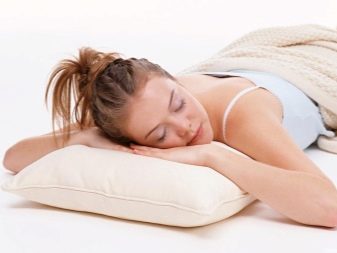
You can also rely on the following signs:
- a broken morning state, accompanied by pain and stiffness of the cervical spine, indicates an insufficient height of the pillow;
- the constant search for a comfortable position indicates a too high position of the head;
- if you want to put your hand under the pillow, there is not enough height.
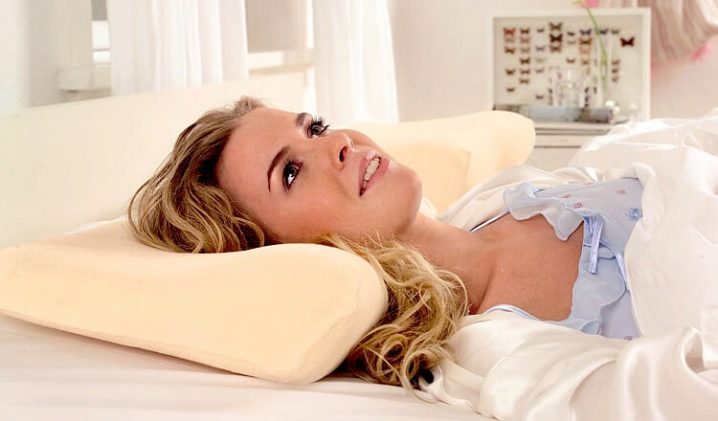
Simpler: if the chin touches the chest, discomfort is created in the neck area - the pillow is high, if the shoulders grow numb and the back numb - it is low.
What else needs to be considered when choosing?
Choosing a model of an orthopedic pillow, you should give preference to a product made of natural material. However, this is not always easy to do, because not every seller will allow you to unpack the goods, open the case of the accessory. If decent companies always meet halfway, unscrupulous sellers can mask a pungent chemical smell.

Even knowing that natural latex does not have a snow-white color, in fact, it is hardly possible to see the padding. But there is a way out: latex slightly gives off rubber, while a synthetic analogue can smell sweet with a pleasant aroma. However, if a specific smell is rather caustic, this product cannot be purchased: the smell of stuffing does not always disappear, but it can deliver a headache.
In addition to the choice of filler, there are several nuances to keep in mind. This will avoid buying a useless item.
When choosing a model, it is worth considering:
- an insufficiently correct or soft mattress will nullify all the "useful" qualities of the pillow;
- it is bought for a specific person;
- a pillow is placed under the neck with a large roller, while the shoulders should rest on the mattress;
- the position on the stomach is harmful: it provokes muscle spasm;
- the classic model in the form of a rectangle and "wave" with rollers are suitable for any sleeping position (the larger roller is on the side, the smaller one is on the back);
- the "crescent" style is designed for sleeping on the back.
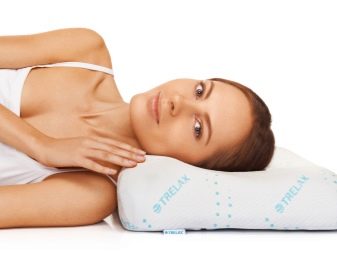
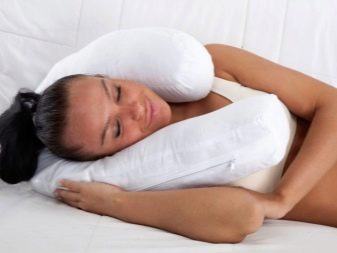
Care rules
A small instruction with simple rules will help to extend the life of the orthopedic pillow:
- not the filler is erased, but the cover;
- washing is carried out in a delicate mode at a temperature of no more than 30-40 degrees;
- the use of bleaches is unacceptable, a strict dosage of detergent is needed;
- if moisture gets on the filler, it must not be dried in the sun or twisted;
- ironing of the stuffing is unacceptable (this will lead to a change in the structure of the material);
- periodically the product needs to be ventilated in the fresh air;
- no whipping to get rid of dust!

For tips on how to choose an orthopedic pillow, see the video below.













The comment was sent successfully.